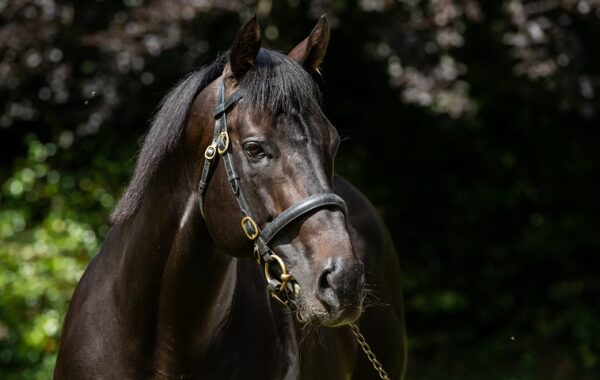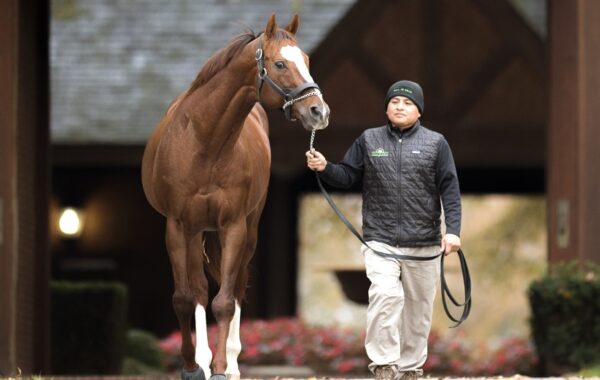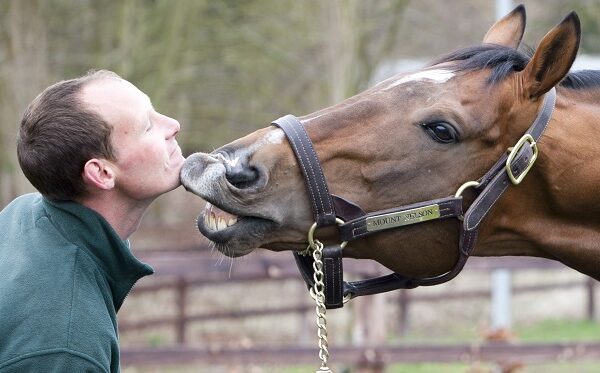The Irish Derby of 2014 was won by a very good colt. Let there be no doubt about that. And it would be hard to argue against his being the best-bred winner in the race’s history. By a dual Derby winner in Galileo out of a dual Oaks winner in Ouija Board, Australia stands as living proof that putting the best to the best can realise the hopes embodied by such a union.
That much is highly satisfactory, but what we saw at the Curragh barely resembled a horserace, let alone a race that ranks as the most prestigious in Ireland’s calendar. Australia did a lap of honour at 8-1 on, enhancing his reputation not one jot in beating a bunch of obvious no-hopers, while collecting €725,000 for his spot of gentle exercise. That was less than satisfactory.
Of course, it wasn’t going to be like that until a few hours before the off. The late withdrawal of Kingston Hill, who was unsuited by the prevailing soft ground, robbed us of a re-match between between the pair who had finished first and second at Epsom, which promised to be at least mildly interesting, although Australia would still have been something like 3-1 on. Such was the authority of the Ballydoyle colt’s victory in England, there was never going to be much in the way of excitement on the Curragh.
A European Derby, by tradition, is a race over 2,400 metres. Cast tradition out, willy-nilly, and you throw away the precious heritage of continuity that sustains and identifies our sport
The Irish Derby never ranked as an event of real consequence internationally before the massive boost to its prize-money fund in 1962, but that catapulted it instantly into Europe’s premier league, where it thrived famously. It occupied a prime slot in the calendar, about three weeks after the running of the Epsom and Chantilly Derbys, making it a convenient target for those who had contested those classics. It might even attract the winners of both and serve to determine the identity of Europe’s pro tem champion middle-distance three-year-old. In its new guise, the Irish Derby was a hugely consequential event.
A famous occasion in 1983 brought Caerleon and Teenoso together after their victories at Chantilly and Epsom respectively, only for Shareef Dancer to turn in a career-best performance, relegating them to the minor placings. I well remember the build-up to the 1991 contest that attracted both Derby hero Generous and Prix du Jockey-Club winner Suave Dancer, if only for the fact that I fortunately chickened out of a huge (for me) bet on the latter at the last minute. Generous was emphatically superior at the Curragh, and, needless to say, I did not invest when Suave Dancer gained his revenge in the Arc.
Orby, the first Irish-trained Derby winner in 1907, was on his own as victor also in his home country until the Curragh Classic’s status was so significantly enhanced, but thereafter the feat became almost commonplace, achieved by Santa Claus, Nijinsky, Grundy, The Minstrel, Shirley Heights, Troy, Shergar, Shahrastani, Kahyasi, Generous, Commander In Chief, Sinndar, Galileo, High Chaparral and Camelot before Australia’s walk in the park this year. Only three have doubled up after a triumph in Chantilly, namely Assert, Old Vic and Montjeu, none of whom faced the winner from Epsom.
Montjeu recorded his feat in 1999, and he remains unique as the only winner of two of Europe’s principal Derbys to have been trained in France. He seems bound to retain that distinction unless the disastrous mistake in reducing the distance of the Prix du Jockey-Club to 2,100 metres in 2005 is acknowledged and the race restored to its proper trip. In Europe one of the defining characteristics of a Derby, along with its restriction to three-year-old colts and fillies, has always been that it is contested over a mile and a half. The Prix du Jockey-Club ceased to be a Derby when it ceased to be run at 2,400 metres.
Nobody asked the Irish, the French, the Germans or the Italians to frame their Classic programme on the lines of the original English model, but they did, and the benefits of being able to compare like with like were obvious over numerous generations. Of course, each country had important races for three-year-olds outside that schedule, and for more than a century the Prix du Jockey-Club was less highly regarded than the Grand Prix de Paris, an event without an equivalent elsewhere. Run over 3,100 metres at the end of June, and always open to foreign horses, it provided a severe summer test, and it was where the Jockey-Club winner was supposed to turn up and show his mettle over that extended trip, sometimes in competition with England’s Derby victor. The Grand Prix, always a greater attraction for the public, carried more kudos; success in both races conferred superstar status.
But the Grand Prix de Paris was always an anomaly. It sat uneasily in the French schedule by reason of its distance and its slot in the calendar, and it seemed a misfit in the European Pattern when that was introduced in 1971. In 1987, not unexpectedly, the decision was taken to make a radical change; the distance was reduced to 2,000 metres, while its Group 1 status was retained. Where Europe’s Pattern was concerned, it became just a different sort of misfit.
What a load of nonsense
Then came the nonsense of 2005, when, despite intense lobbying from a host of professionals who opposed changes to the Prix du Jockey-Club, 170 years of tradition were ditched to reduce the trip to 2,100 metres.
At the same time the Grand Prix de Paris underwent a further change, raised in distance to 2,400 metres. In effect, there was a new French Derby, but the prize-money allocations indicated that we were still supposed to regard the Jockey-Club as France’s premier Classic.
Sorry. A European Derby, by tradition, is a race over 2,400 metres. Cast tradition out, willy-nilly, and you throw away the precious heritage of continuity that sustains and identifies our sport. Racing is what it is because of what it has been. Meddle with what has passed the test of time through centuries, and you destroy what has made the sport great.
Unfortunately, the wreckers have become more conspicuous and more damaging. In the last month supposed bright sparks with no appreciation of what tradition and history mean to racing have come up with three ideas that need outright condemnation. Who warrants the prize for the worst suggestion? We need more than one coin to say it’s a toss-up.
Goodwood, the course I love and which stages my favourite meeting of the year, should be thoroughly ashamed for having allowed the name of the Stewards’ Cup to be banished from its 2014 ‘Glorious’ schedule. Yes, the Stewards’ Cup is just a tinpot handicap when all’s said and done, but it’s been a fixture for 170 years, closely identified with the meeting, and should never be for sale. In nobody’s mind will it ever be anything but the Stewards’ Cup.
We have let them foul up our most precious possession by switching the Derby from a logical, stand-alone Wednesday, a natural day of celebration, to a Saturday when it must compete with a host of other sporting events, and now somebody wants to move the off-time to the evening in 2015. The date will coincide with the final of the European Champions League. How clever is that?
There had been rumours for a while that the authorities were not happy about how they defined the Flat season in England. Well, they shouldn’t be happy, because they have it wrong already. We’ve crowned two jockeys who shouldn’t have been named champions because they chose to ignore what happened before and after the part of the season when grass and all-weather racing operated in tandem. Now it seems they want to ignore more and count nothing before the Guineas meeting.
The Flat season in England runs from January 1 to December 31. Check the fixture list. The suggestion that some races and some meetings just don’t matter is nonsense. What is patently untrue cannot be believed.





